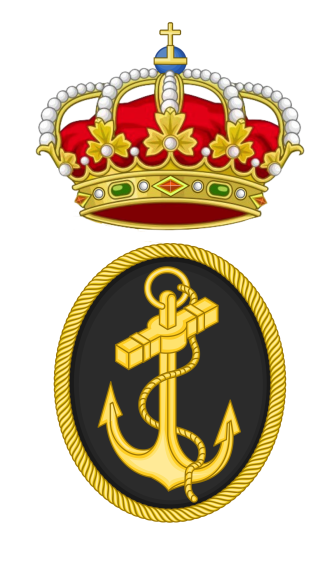
The Spanish Navy or officially, the Armada, is the maritime branch of the Spanish Armed Forces and one of the oldest active naval forces in the world. The Spanish Navy was responsible for a number of major historic achievements in navigation, the most famous being the discovery of America and the first global circumnavigation by Elcano. For several centuries, it played a crucial logistical role in the expansion and consolidation of the Spanish Empire, and defended a vast trade network across the Atlantic Ocean between the Americas and Europe, and the Manila Galleon across the Pacific Ocean between the Philippines and the Americas.

The Álvaro de Bazán class, also known as the F100 class, is a class of Aegis combat system-equipped air defence frigates in service with the Spanish Navy. The vessels were built by Spanish shipbuilder Navantia in Ferrol, with the lead ship of the class named for Admiral Álvaro de Bazán.

Juan Carlos I is a multi-purpose amphibious assault ship-aircraft carrier in the Spanish Navy. Similar in role to many aircraft carriers, the amphibious landing ship has a ski jump for STOVL operations, and is equipped with the McDonnell Douglas AV-8B Harrier II attack aircraft. The vessel is named in honour of Juan Carlos I, the former King of Spain.
The Royal Australian Navy, although a significant force in the Asia-Pacific region, is nonetheless classed as a medium-sized navy. Its fleet is based around two main types of surface combatant, with limited global deployment and air power capability. However, in 2009, a white paper, Defending Australia in the Asia Pacific Century: Force 2030, was produced by the Australian government which set out a programme of defence spending that will see significant improvements to the RAN's fleet and capabilities.
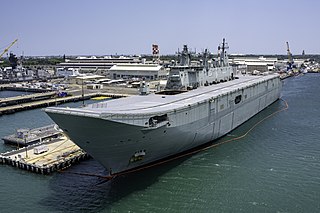
The Canberra class is a ship class of two landing helicopter dock (LHD) ships built for the Royal Australian Navy (RAN). Planning to upgrade the navy's amphibious fleet began in 2000, based on Australian experiences leading the International Force for East Timor peacekeeping operation. With a new climate for growing Australian Navy spending, a desire existed for forward defence capability for landing and supporting troops on Asian territory, that had never existed in Australian history, even with the old Majestic-class light fleet carriers, HMAS Melbourne and HMAS Sydney in the 1970s. In 2004, French company Direction des Constructions Navales (DCN) and Spanish company Navantia were invited to tender proposals, with DCN offering the Mistral-class amphibious assault ship and Navantia proposing the "Buque de Proyección Estratégica" design. The Spanish design was selected in 2007, with Navantia responsible for construction of the ships from the keel to the flight deck, and BAE Systems Australia handling the fabrication of the combat and communications systems. Finally, Siemens (Germany) supplied and fitted the azimuth thrusters.

The S-80 Plus class is a Spanish class of four submarines being built by the state-owned Spanish company Navantia at its Cartagena shipyard for the Spanish Navy. In common with other contemporary submarines, they feature air-independent propulsion.
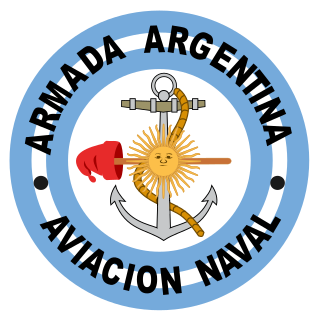
The Argentine Naval Aviation is the naval aviation branch of the Argentine Navy and one of its four operational commands. Argentina, along with Brazil is one of two South American countries to have operated two aircraft carriers.

The Meteoro-class offshore patrol vessel, also known as Buque de Acción Marítima (BAM), are new modular offshore patrol vessels of the Spanish Navy adapted to different purposes from a common base, manufactured by Navantia. The BAMs combine high performance with mission versatility, a high commonality with other ships operated by the Spanish Navy. Acquisition and lifecycle costs are reduced.

The Serviola-class patrol boats are a series of patrol boats built in 1990 at the shipyard in Ferrol in the former Empresa Nacional Bazan for the Spanish Navy. They entered service with the Spanish Navy from October 1992. They are based in the Galician port of Ferrol making most of their patrols along the Galician and Cantabrian coasts.

The Lazaga class is a series of midsize patrol vessels for coastal and exclusive economic zone patrol, built by the Spanish National Bazán shipyards for the Spanish Navy and the Royal Moroccan Navy. Two of the Spanish units were later transferred to the Colombian Navy.
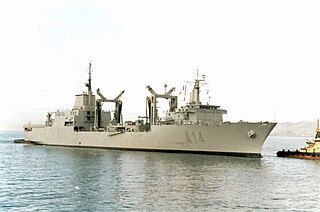
On 12 January 2012 Somali pirates attacked the Spanish Navy replenishment oiler Patiño after mistaking her for a large merchant ship. The pirate skiff hit Patiño with automatic fire before being repelled, damaged by return fire and captured after a brief chase by the vessel's helicopter. The encounter took place off the coast of Somalia and ended with the death of one pirate and the capture of six others.

Meteoro (P-41) is the lead ship of the Meteoro class, a new kind of offshore patrol vessel created for the Spanish Navy and called BAMs.

Furor (P-46) is an offshore patrol vessel and the sixth of the Meteoro class created for the Spanish Navy.
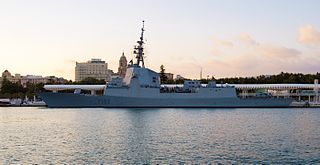
Blas de Lezo (F-103) is a Spanish Navy guided missile frigate of the Álvaro de Bazán class. This is the third ship class of air defense frigates in the Spanish Navy. It was named after the 18th century Spanish Admiral Blas de Lezo. The ship was built by Izar Shipbuilding in Ferrol, Spain and entered into service in 2004.
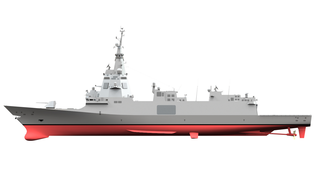
The F110 class, also known as the Bonifaz class, are a multi-purpose, anti-submarine class of Aegis combat system-fitted heavy frigates under construction for the Spanish Navy. The project is being co-developed by the Spanish Ministry of Defence and the state-owned company Navantia. The construction of the first unit started in April 2022. Deliveries are scheduled to start in about 2025.

Cristóbal Colón is the fifth and last ship of the Álvaro de Bazán-class of air defence frigates entering service with the Spanish Navy. The ship is named after Christopher Columbus, the Genoese explorer that claimed the discovery of America in the name of the Crown of Castile. It is the most modern ship of the Spanish Navy.

Méndez Núñez (F-104) is an Álvaro de Bazán-class frigate of the Spanish Navy. She is the fourth ship of her class, entering service in 2006. She is named after the 19th-century Spanish Rear admiral Casto Méndez Núñez. It was the first Spanish Navy vessel to visit the Philippines since the end of the Southeast Asian nation's Spanish colonial-period in 1898.

ROU 26 Vanguardia is a Piast class salvage and marine research vessel in service with the Uruguayan Navy. The ship was laid down for the East German Navy in 1976, before being acquired by the German government after the Reunification of Germany. The ship was purchased by the Republic of Uruguay in 1991 and renamed Vanguardia.

Atalaya (P-74) is a Serviola-class patrol boat of the Spanish Navy built in 1991. The ship's primary missions are oceanic patrol, fishing control, escort, and maritime rescue. Its home port is at the La Graña Naval Station in Ferrol.


















